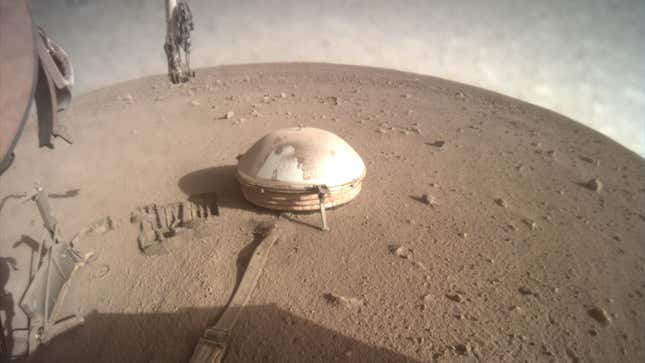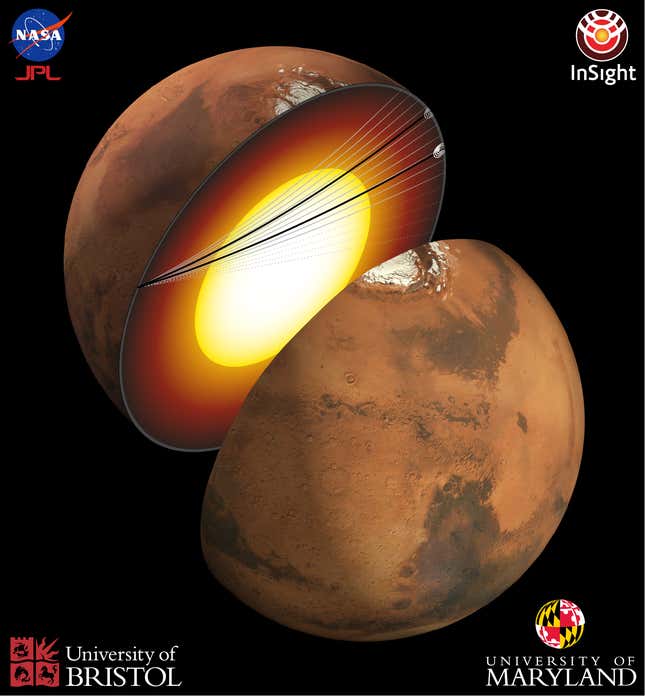
Scientists have detected sound waves moving through Mars’ core for the first time, offering new clues to the composition of the fourth planet from the Sun.
The now-decommissioned InSight lander detected the seismic waves from two signals: one from a marsquake (a tremor on the planet) and the other from a meteorite impact on the other side of Mars. The team’s research is published today in the Proceedings of the National Academy of Sciences.
“These first measurements of the elastic properties of Mars’ core have helped us investigate its composition,” said Jessica Irving, a planetary scientist at the University of Bristol and the paper’s lead author, in a Bristol release. “Rather than being just a ball of iron, it also contains a large amount of sulfur, as well as other elements including a small amount of hydrogen.”
The team found that about a fifth of the mass in Mars’ core is made up light elements like sulfur and oxygen. That’s a lot more than the proportion in Earth’s core, providing some hint at why Earth ended up so lively and Mars appears so devoid of life.

“The uniqueness of Earth’s core allows it to generate a magnetic field that protects us from solar winds, allowing us to keep water,” said Nicholas Schmerr, a geologist at the University of Maryland and a co-author of the paper, in the release. “Mars’ core does not generate this protective shield, and so the planet’s surface conditions are hostile to life.”
2021 research found that the Martian core was larger than previously thought; the new work found that the core is actually slightly denser and smaller, with a radius between 1,106 miles and 1,125 miles.
InSight stopped responding to NASA pings in December after years of Martian dust accumulated on its solar panels, effectively choking the spacecraft to death. It landed on Mars in November 2018, and the mission lasted twice as long as NASA scientists had planned.
In its time on the Martian surface, InSight detected over 1,300 marsquakes using its seismometer. The instrument detects seismic waves bouncing around inside the planet, which in turn allow scientists to discern aspects of the planet’s makeup.
Last year, scientists found meteorite impacts on the Martian surface as well as evidence of volcanic activity courtesy of InSight’s sensitive seismometer.
Though InSight is no longer active, researchers are still poring over the lander’s data, giving the mission a very productive afterlife.
More: Rest in Peace, InSight: Scientists Pay Tribute to the Mars Lander

